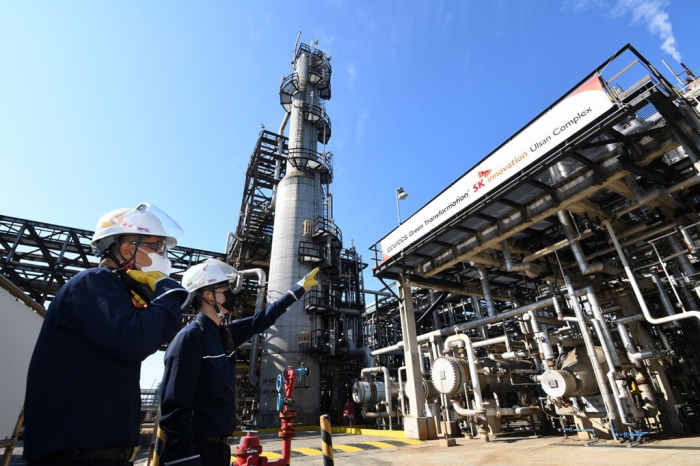Energy
S.Korean refiners foresee dismal H2 on falling margins
Refining margins hit a five-month low in July as demand weakens amid increasing supply
By Aug 09, 2022 (Gmt+09:00)
1
Min read
Most Read
LG Chem to sell water filter business to Glenwood PE for $692 million


Kyobo Life poised to buy Japan’s SBI Group-owned savings bank


KT&G eyes overseas M&A after rejecting activist fund's offer


StockX in merger talks with Naver’s online reseller Kream


Mirae Asset to be named Korea Post’s core real estate fund operator



Refiners in South Korea are expected to report weak earnings in the third quarter after record profits in the previous three months as margins decline on sluggish demand.
The benchmark Singapore gross refining margin against Dubai fell to a five-month low of $9.1 a barrel on average in July, near a third the $24.5 in June, according to refining industry sources on Tuesday.
The key margin for the local refiners’ profits on July 25 dropped to $0.83, the lowest so far this year, falling far short of the $4 breakeven threshold, the sources said.
“We suffered some losses from the refining business as the margin dropped to below $1,” said a source at a domestic refiner. “Second-half earnings are expected to significantly miss forecasts.”
EARNING SHOCKS AFTER RECORD PROFITS
The industry enjoyed a boom until the second quarter. SK Innovation Co., the country’s top refiner, reported a record quarterly operating profit of 2.3 trillion won ($1.8 billion) based on the largest-ever sales of 19.9 trillion won.
S-Oil Corp., Saudi Aramco’s refining unit in South Korea, logged a record operating profit of 1.7 trillion won in the April-June period, and Hyundai Oilbank Co., another refiner backed by Aramco, followed suit with a profit of 1.4 trillion won.
None of those refiners are expected to show similar performances in the second half given declining refining margins, analysts said.
Global petroleum demand is weakening despite increasing supply. Sri Lanka fell into default for the first time in the country’s history in May, while Pakistan and Bangladesh are seeking bailout packages from the International Monetary Fund (IMF). Those troubled nations significantly cut petroleum product imports.
On the other hand, the supply of refined oil increased as the US and China maximized crude runs to take advantage of rising product prices.
Refiners in the US Gulf Coast operated their facilities almost fully with utilization rates at 98.6% in July, according to industry sources. China’s gasoline exports last month totaled 493,000 barrels a day, sharply higher than an average of 450,000 barrels in 2021.
Write to Ik-Hwan Kim at lovepen@hankyung.com
Jongwoo Cheon edited this article.
More to Read
-
 EarningsS-Oil sees softer Q3 refining margin after record Q2 profit
EarningsS-Oil sees softer Q3 refining margin after record Q2 profitJul 28, 2022 (Gmt+09:00)
2 Min read -

-

Comment 0
LOG IN


